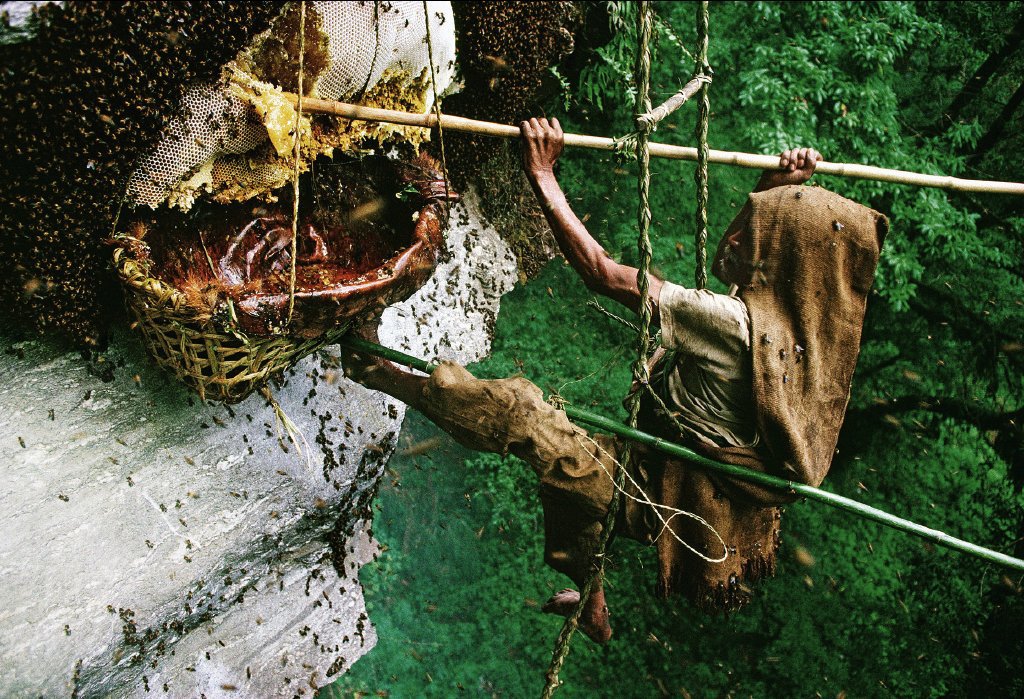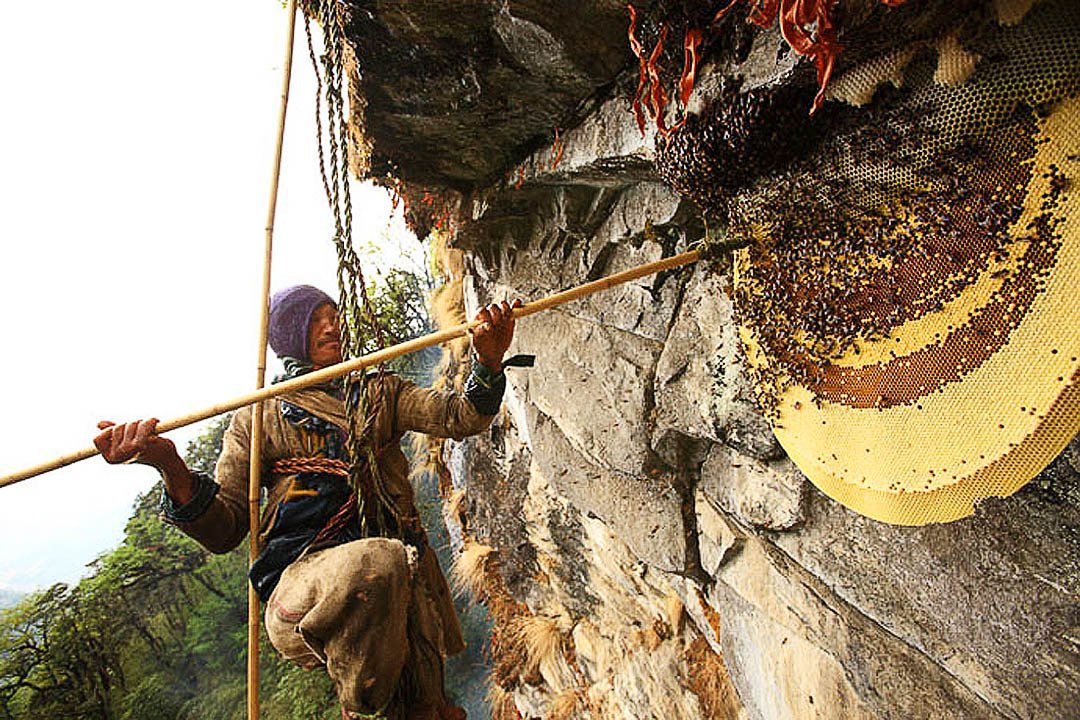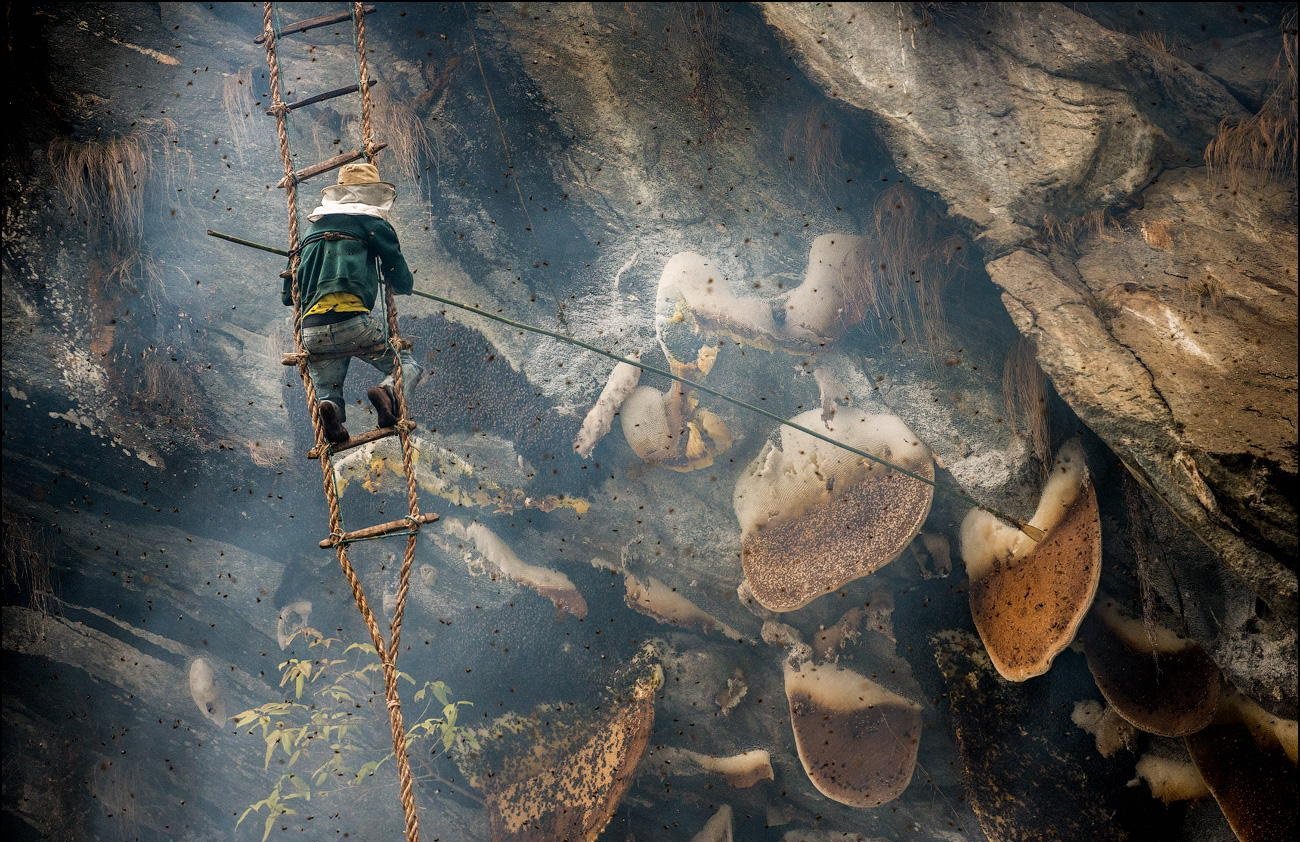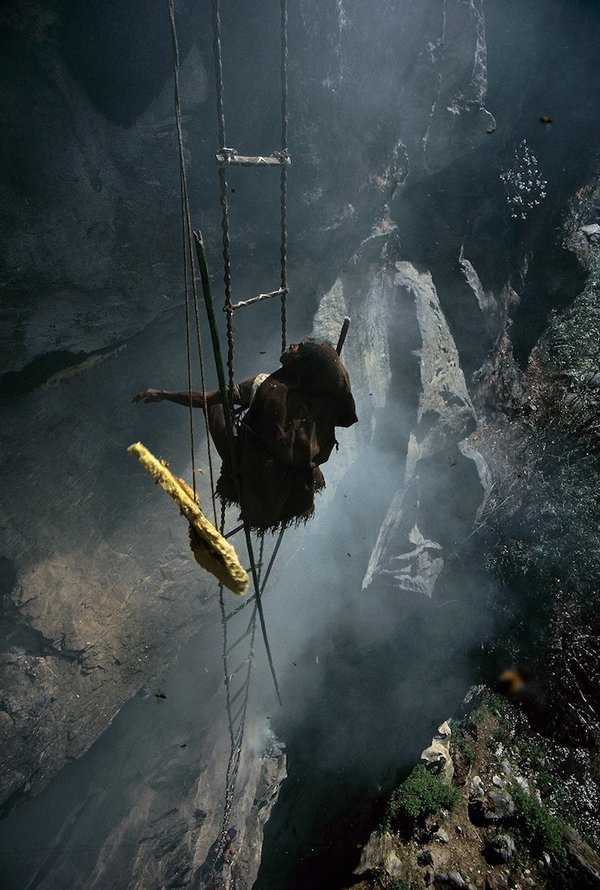“One month a year, giant Himalayan Cliff bees, the biggest bees in the world, come to collect nectar from a poisonous flower, giving the honey they make certain medicinal, aphrodisiac, and hallucinogenic properties.”
I could go on a little bit of a rant about how you can make a drug out of pretty much anything these days, but that’d be taking away, heavily, from a practise and tradition that apparently dates back thousands of years, and even holds a certain religious and cultural importance.
In a remote part of Nepal, an isolated tribe known as the Gurung go through borderline superhuman efforts to collect and harvest ‘mad honey’, known for its psychotropic effects.

Himalayan Cliff Bees can grow up to 3 cm in length and produce a form of honey (also known as red honey) so rare it’s coveted by people around the world. It’s said to help with diabetes, hypertension, and sexual performance and the Gurung even have a teaspoon of it every morning. However, the honey is most famous (or notorious) for its psychoactive properties, with the inebriating effects apparently being similar to Absinthe. In fact, in large doses, it can lead to cardiac problems and full blown hallucinations.

The honey hunters have it the hardest though, usually climbing steep, treacherous cliffs hundreds of feet high without any protective clothing. They’ve just learned to tolerate the bee stings.

Once the hunter is positioned, the bees are smoked out out, and the honeycombs are chiseled off the rock and caught by baskets that are then lowered onto the ground. Remember, the hunter is doing all of this on a rope ladder, with no protection, and with only angry bees and acrid smoke for company. The entire process lasts for around 3 days, and is a bit of a social event as well. The regular yield is around 20-50 gallons, and once they’re done, they wash off in nearby rivers and trek back home, blisters, stings, sores and all.

Tourism and a global demand for this honey is having a gradually detrimental effect however, as people are paying hunters to get honey off-season, which has a very negative impact on the ecosystem.
Watch the documentary about these fascinating people by Raphael Treza to know more!
Pictures from Imgur.

















